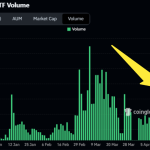



At the end of her mandate, Corinne Dromer takes stock of her seven years at the head of the CCSF, where she led debates between representatives of banks, insurers and consumer associations, among others.

Corinne Dromer
President of the Financial Sector Advisory Committee (CCSF)
Corinne Dromer has been President of the CCSF since January 2017. At the end of her term, she will join the board of the Financial Markets Authority (AMF).
It is not the most well-known instance to the general public. However, it plays an important role in protecting consumers of financial products and services that we all are. Created in 2004, so 20 years ago this year, the Financial Sector Advisory Committee (CCSF) brings together representatives of banks and insurers, consumer associations and trade unions and employers' organizations, as well as parliamentarians and academics, under the aegis of the Banque de France. His goal: ensure respect for user rightsthanks to the implementation of better standards and practices, and more transparent information.
President of the CCSF for almost 7 years, Corinne Dromer is preparing to hand over the reins to join the board of the Financial Markets Authority (AMF). She agreed to return to her role within the body and to the main issues which marked her dual mandate.
Corinne Dromer, the CCSF is little known to the general public, even though it acts in the interest of consumers. Could you remind us what its mission is?
Corinne Dromer: The CCSF is not an authority: its role is not to act as police. It is a consultation body, whose mission is to develop regulations or practices in the financial sector, for the benefit of customers, in dialogue with bankers, insurers and brokers. We dissect the subjects in a very concrete way to see how to improve consumer information and protection.
Clearly, the CCSF produces transparency…
Yes, of course, transparency, good practices and, possibly, regulatory developments. Let's take the example of supplementary retirement contracts. Insurance companies held billions of euros in escheated assets. Following our recommendation on the subject, a bill has made it possible to effectively improve the information of policyholders on the existence, or not, of such a contract.
Retirement savings: Some people have an additional pension without knowing it
Who is the initiative for the topics examined by the CCSF?
It depends. We always have a mission letter from the Minister of the Economy. But we can also take charge of ourselves. This was the case, for example, for the conditions for sub-annual termination of insurance contracts (the possibility of changing insurance without waiting for the anniversary date of the contract, Editor's note). We looked at all the existing contracts (including those for cats and dogs!) to realize that it was terribly complex! To simplify this universe, we have published the following notice: all insurance contracts, excluding protection, must be cancellable at any time beyond the first year, as is the case for cars or homes. .
In the case of self-entry, who is the initiative? Rather the representatives of consumers than those of banks and insurers, we imagine…
Yes, but it can also be a parliamentarian, an academic, a union, or even a professional who considers that there is room for change.
I tend to think that voluntary constraints are as effective as imposed constraints.
The CCSF produces reports, opinions and recommendations. What is the difference between the last two?
It's very simple. Opinions are market agreements negotiated in advance, which are the subject of consensus and which professionals undertake to implement. These are voluntary constraints, which I tend to think are as effective as imposed constraints. In the case of the recommendations, there is also consensus, but the measures to be implemented require changing the regulations, therefore passing through a law.
Has certain work of the CCSF remained a dead letter, due to lack of consensus?
Yes, of course. It hasn't happened very often, but it has happened.
What is the role of the president in this process?
That of an orchestra conductor. Discuss with everyone, compare positions, negotiate, involve everyone in a positive approach to create the conditions for consensus.
When you arrived at the head of the CCSF, did you have an agenda, a list of subjects to cover?
I didn't have an agenda, but a few subjects that were close to my heart. I will cite two: fees related to banking incidents and insurance. My predecessor (Emmanuel Constans, Editor’s note) had worked a lot on transparency in the banking sector, it seemed to me that the same work was being done on the insurers side.
I still think payment incident fees are too expensive
Let's start by talking about bank pricing. Since 2010, the CCSF has been running an observatory on the subject. Did he achieve his goals?
Yes I think so. The annual report of the banking tariff observatory does not simply follow the evolution of the most frequent tariff lines. It also highlights less visible practices. In the latest edition, a chapter, for example, is devoted to the growing presence, in price brochures, of fixed overdraft minimums, which considerably increase the cost of small overdrafts, even authorized ones.
Bank charges: new tricks from banks to charge more for your overdraft
This report also focuses on the costs associated with holding a real estate loan…
Effectively. The number of fee lines likely to be invoiced for the slightest change on a property loan is quite incredible. By highlighting them, the observatory is fulfilling its role.
Real estate credit: these hidden fees that increase the cost of your loan
Do you think, more generally, that retail banks have too heavy a hand on banking fees?
I will be very clear: no, the banking rates practiced in France are generally low. Today, you can open an account, make payments, access savings products at a lower cost. If there is a problem, it is rather in the treatment of customers with modest incomes – too high to be “fragile customers”, but not enough to have favorable conditions for overdrafts, loans, etc. – and who suffer from rejection fees.
There has nevertheless been progress in monitoring people in financially fragile situations…
It's true. For them, incident costs have fallen very sharply. And we should be happy about it! The subject is rather on the side of the criteria which allow one to be considered “fragile”. Some banks have set very low monthly credit flow thresholds (1500 euros, net minimum wage, poverty threshold, etc.). What about the people just above? They are exposed to incident fees which I still think are too expensive. 20 euros for a direct debit rejection or 15 euros for sending letters on the account situation, it's enormous!
I am very in favor of the CCSF working on a minimum base of borrower guarantees
What was the role of the CCSF in the genesis of the Lemoine law, which opened up the borrower insurance market to competition?
It's something we've worked on, I think, every year. Concerning sub-annual termination, it had to be done and I am delighted that it has been done. I was also very favorable to the disappearance of the medical questionnaire for credits of less than 200,000 euros, in order to facilitate access to credit for people who are excluded for health reasons. However, there is still much to do. For example on the equivalence of levels of guarantees and compensation: I am very in favor of the CCSF working on a minimum base of guarantees for the borrower, to prevent cases of exclusion from multiplying. A refusal of compensation is always a disaster for the property borrower who finds himself with a mountain of debt. However, the CCSF must encourage competition between players by taking the point of view of the borrower – a quality of guarantees combined with favorable prices – not that of the insurer who mainly sees the evolution of its market shares.
Why has the CCSF not taken up the subject of borrower insurance for consumer loans?
Personally, I consider that in terms of consumer credit, the interest rates already reflect the risk of default and that adding the cost of insurance is not a good operation for the borrower. Furthermore, there is the question of the readability of the information provided to borrowers at the time of subscription. This is indeed a subject for the CCSF.
Consumer credit: how banks put pressure on you to take out borrower insurance
The CCSF has a new mission: that of observing the performance and costs of certain savings products (life insurance, PER, PEA, securities account, etc.). How will this come to fruition?
By creating a new body, the Financial Savings Products Observatory, composed equally of representatives of professionals in the sector and consumer-savers. It will publish a report every year. This will be implemented during the year 2024.
Users must adopt an active approach towards their financial product providers
Do financial sector players in general have a problem with transparency?
I'll tell you frankly: transparency is a struggle! When it comes to savings, certain fee tables, for example, are incomprehensible to non-professionals, even though they comply with European regulations. Same thing for certain clauses in insurance contracts: we just ask that they be readable and clear for the consumer.
Does the consumer also have a role to play?
Of course, we can only encourage users to take an active approach towards their financial product providers. You have to read, be interested, try to understand, and not just sign at the bottom of the contract. No one can do it for them.











+ There are no comments
Add yours